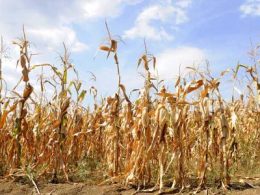Ukraine-Russia sector considerations: Agriculture is a critical sector for both countries, with Ukraine being one of the world’s largest grain producers and Russia being a major agricultural player. The sector is a significant contributor to the economies of both countries, with Ukraine’s agricultural sector accounting for around 10% of its GDP and Russia’s agricultural sector accounting for around 4% of its GDP.
Agriculture is a vital sector for both Ukraine and Russia, with both countries being major producers of grains, oilseeds, and other agricultural products. The sector is also a significant employer, with millions of people employed in agriculture in both countries. The sector is also a major contributor to the food security of both countries, with Ukraine being one of the world’s largest wheat producers and Russia being a major producer of wheat, barley, and other grains.
Key Challenges and Opportunities
Despite the importance of the sector, both Ukraine and Russia face significant challenges in the agricultural sector. These challenges include:
1. Climate Change: Climate change is having a significant impact on agriculture in both Ukraine and Russia, with changing weather patterns and increased frequency of extreme weather events affecting crop yields and food security.
2. Trade Wars: The ongoing trade wars between Ukraine and Russia, as well as between Ukraine and the European Union, are having a significant impact on the agricultural sector, with tariffs and other trade barriers affecting the flow of goods and services.
3. Economic Sanctions: Economic sanctions imposed on Russia by the European Union and other countries are having a significant impact on the agricultural sector, with restrictions on the flow of goods and services affecting the sector’s ability to operate effectively.
4. Corruption: Corruption is a significant challenge in both Ukraine and Russia, with corruption affecting the agricultural sector and undermining its ability to operate effectively.
Opportunities for Growth
Despite the challenges facing the agricultural sector, there are also significant opportunities for growth and development. These opportunities include:
1. Digitalization: The increasing use of digital technologies in agriculture, such as precision farming and data analytics, is providing new opportunities for farmers and agricultural businesses to improve their efficiency and productivity.
2. Sustainable Agriculture: The increasing focus on sustainable agriculture and environmental sustainability is providing new opportunities for farmers and agricultural businesses to develop more sustainable and environmentally friendly practices.
3. Trade Agreements: The signing of new trade agreements between Ukraine and Russia, as well as between Ukraine and the European Union, is providing new opportunities for agricultural exports and imports.
4. Investment: The increasing investment in the agricultural sector, both from domestic and foreign investors, is providing new opportunities for farmers and agricultural businesses to expand and develop their operations.
Conclusion
In conclusion, the agricultural sector is a critical sector for both Ukraine and Russia, with significant challenges and opportunities facing the sector. Despite the challenges, there are also significant opportunities for growth and development, and it is essential that policymakers and stakeholders work together to address the challenges and seize the opportunities.









